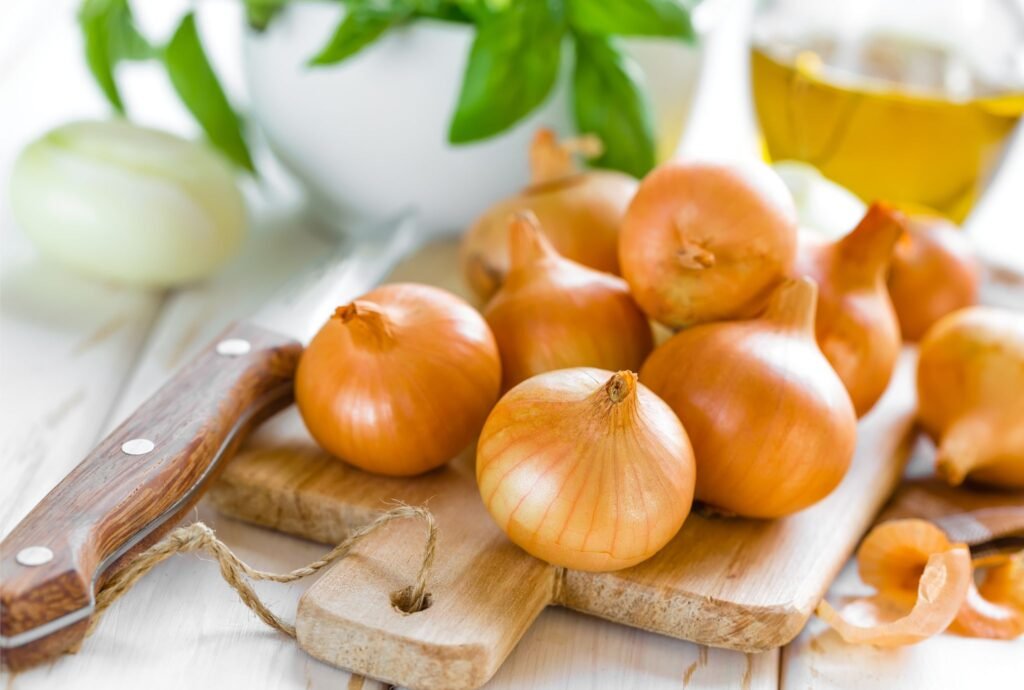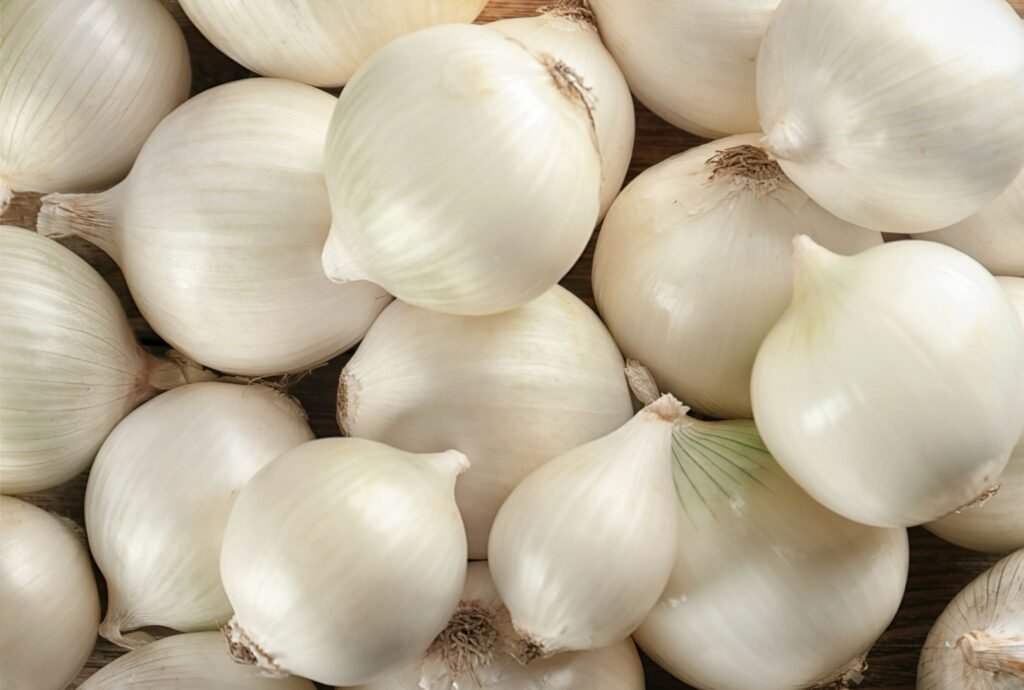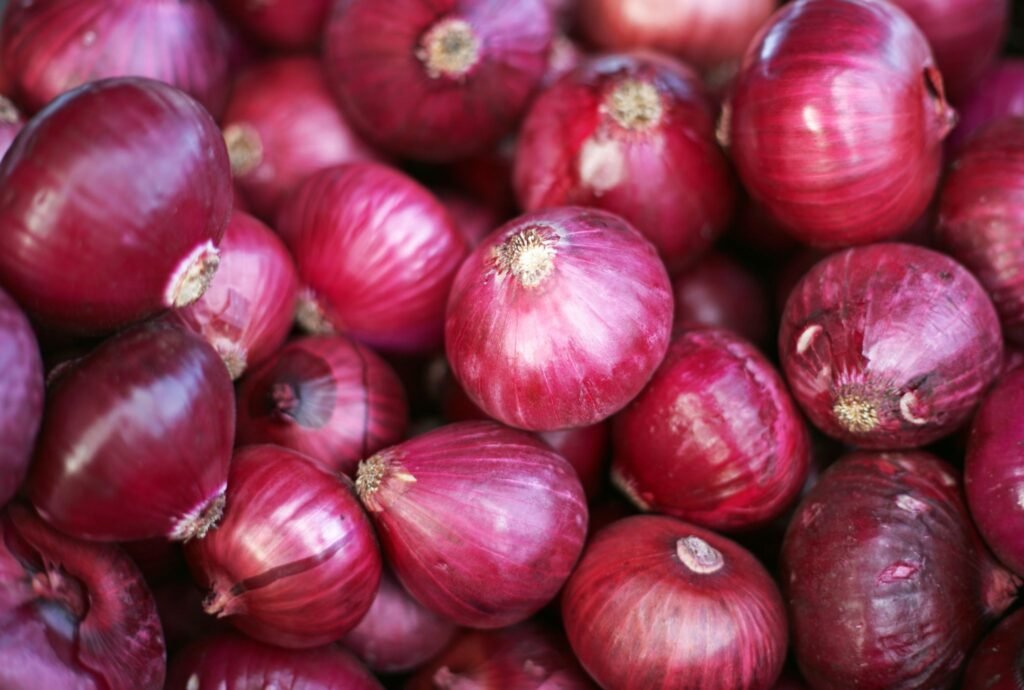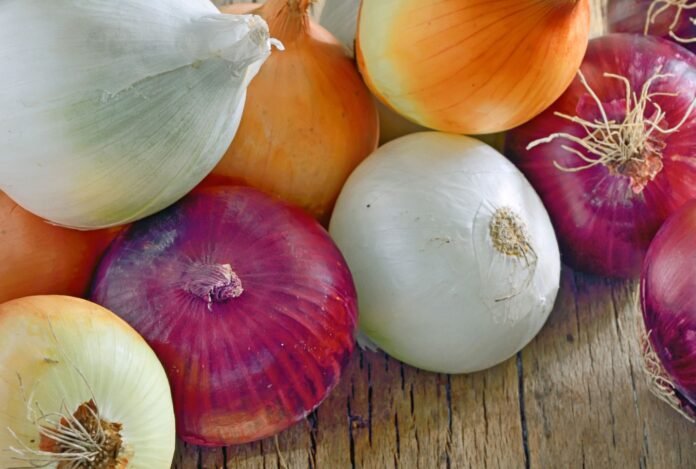Onions are the unsung heroes of the kitchen, effortlessly adding depth and flavor to countless dishes. Following potatoes and tomatoes, they rank as the third most popular fresh vegetable in the United States, with the average American consuming a whopping 18.3 pounds of onions annually!
From caramelizing and frying to pickling and roasting, onions are indispensable in savory recipes. But with so many varieties on grocery store shelves—yellow, white, red, and sweet—how do you know which to choose? This guide breaks down each type so you can pick the perfect onion for any dish.
Yellow Onions: The Kitchen Workhorse

Yellow onions are the most versatile and widely used onions in cooking. Known for their strong, pungent flavor, they contain the highest sulfur content, which gives them a sharp bite when raw.
Why choose yellow onions?
Their flavor mellows and sweetens when cooked, making them ideal for:
- Caramelized onions
- Soups and stews
- Dips, sauces, and roasts
Yellow onions are your go-to for recipes that need a rich, savory base. If a recipe doesn’t specify which type of onion to use, you can rarely go wrong with yellow.
White Onions: Crisp and Mild

White onions are milder and slightly sweeter than yellow onions, making them the best choice for eating raw. They add crunch and a subtle sharpness without overpowering other flavors.
When to use white onions:
- Raw toppings for burgers, tacos, hot dogs, and pizzas
- Mexican cuisine, like salsa, guacamole, and fajitas
- Quick substitutes for yellow onions in cooked dishes
They’re a key ingredient in Mexican food, where their mild heat complements bold flavors. While often enjoyed raw, they can still hold up when cooked if you’re out of yellow onions.
Red Onions: Bold and Vibrant

Red onions stand out with their striking magenta-purple color and versatile flavor. They’re mild enough to be enjoyed raw, yet their natural sweetness makes them a star ingredient in cooked dishes, too.
Why red onions shine:
- Raw slices add crunch to salads, burgers, and sandwiches
- Pickling intensifies their sweet and tangy flavor
- Grilling or roasting caramelizes their sugars while maintaining texture
Pro tip: If red onions taste too sharp for your liking, soak them in cold water to mellow their bite. Pickled red onions, in particular, are a must-try—they deliver tangy, probiotic-rich flavor perfect for tacos, wraps, and more.
Sweet Onions: Naturally Sugary

Sweet onions look similar to yellow onions but are larger, lighter in color, and, as their name suggests, sweeter. Thanks to their high sugar content, they’re perfect for dishes that highlight their natural sweetness.
Best uses for sweet onions:
- Onion rings (crispy, golden perfection!)
- Tarts, jams, and relishes
- Glazes and caramelized dishes
If you’re looking for an onion that doesn’t overwhelm with sharpness, sweet onions are your answer. Their flavor shines in recipes where sugar and caramelization are key.
Choosing the Right Onion: Quick Tips
- For cooking: Yellow onions bring bold flavor to soups, sauces, and roasts.
- For raw dishes: White onions offer a mild crunch perfect for fresh salsas or toppings.
- For pickling or grilling: Red onions combine vibrant color with sweet, tangy flavor.
- For sweet recipes: Sweet onions add caramelized goodness to rings, glazes, and jams.
Final Thoughts
Onions may make you tear up, but their culinary versatility makes them worth it. Whether you’re building a rich soup base, topping tacos with fresh crunch, or adding zing with pickled onions, choosing the right type ensures your dish hits all the right notes. Stock up on these kitchen staples, and don’t forget—store them in a cool, dry, and dark place to keep them fresh longer.



